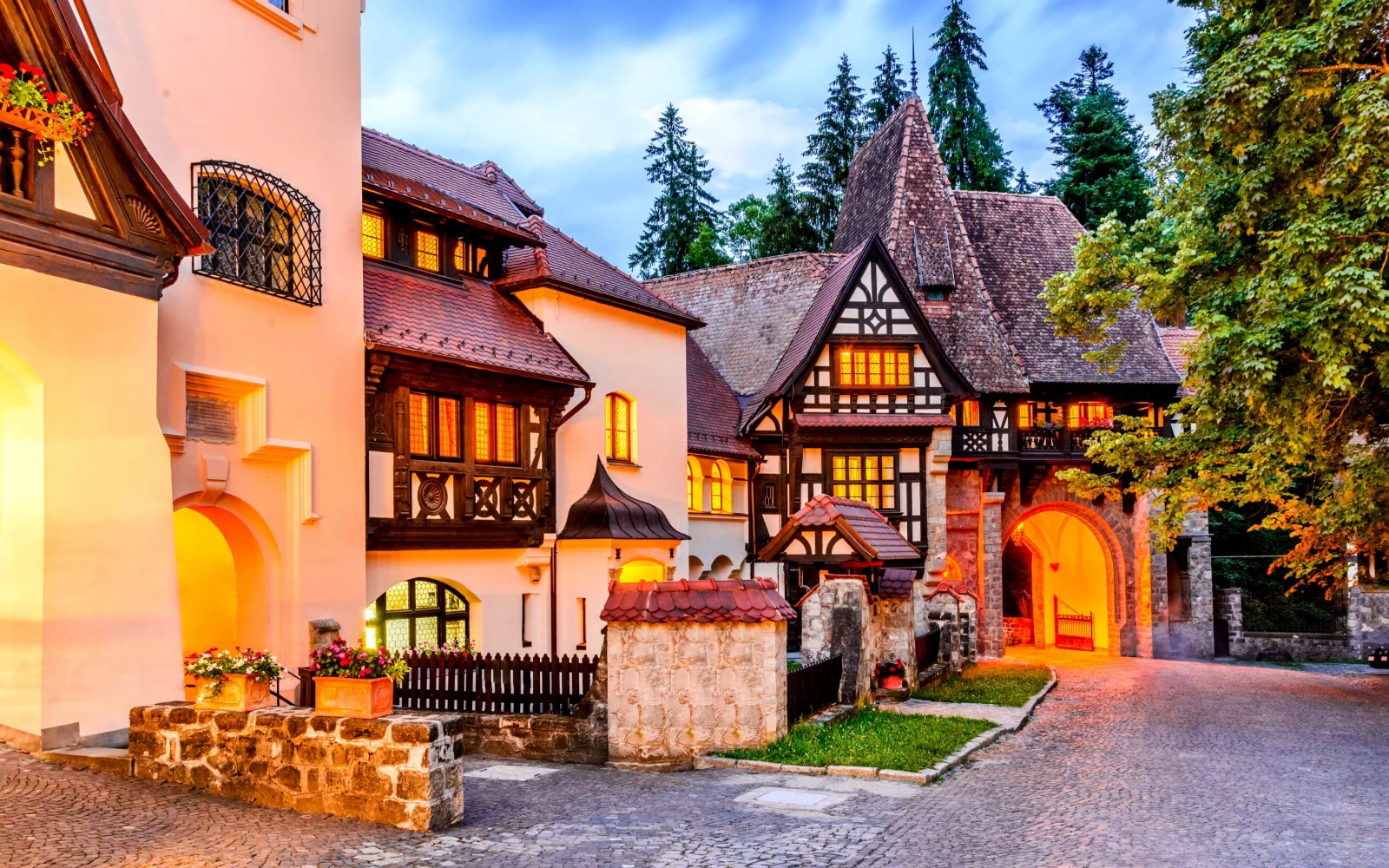Is Romania safe to visit?
Romania is generally safe for visitors, offering unique cultural and natural attractions with relatively low risks. While it’s one of the poorer European countries, violent crime against tourists is rare, with pickpocketing and scams being the most common issues.
Visitors should exercise standard precautions such as safeguarding valuables, being wary of scams, especially taxi overcharging, and taking care when exploring the wilderness or driving on less-developed roads.
After years of being off the radar for most American and Western tourists, Romania is now one of the most popular up-and-coming destinations in Europe.
Visitors are drawn to the breathtaking nature, some of the most unspoiled in all of Europe, and one of the few places where they can spot rare species such as bison and migrating birds.
For lovers of history and culture, Romania also has a lot to offer. From rich folk culture to stunning Bucharest architecture to exotic yet painful reminders of the communist period, one of Europe’s oldest inhabited countries has a lot to offer anyone.
Of course, many visitors flock to Transylvania to learn the truth behind the Dracula myth. Despite the growing awareness of Romania as a tourism destination, some people are still hesitant to visit because of worries about the country’s safety.
It’s true that Romania is one of the poorer countries in Europe. However, for visitors, it is mostly safe as long as travelers exercise basic common sense. Read on to learn all you need to know!
Is Romania Safe to Visit in 2024?
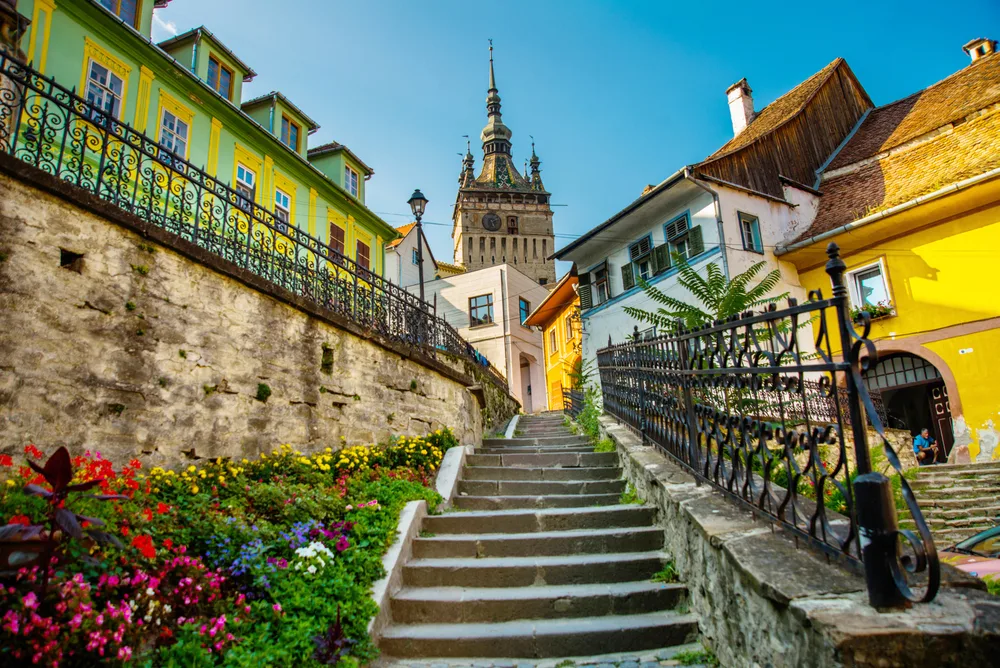
SIGHISOARA, TRANSYLVANIA, ROMANIA – AUGUST 2019: Old building in Sighisoara citadel. Tower Clock in Sighisoara. Turnul cu ceas/Anna ART/Shutterstock
Yes. Romania is one of the safest countries you can visit, despite negative perceptions by some people. The United States State Department ranks Romania’s Travel Advisory at Level 1, the lowest level.
Visitors are not exposed to most of the dangers that poorer people who live in Romania experience. Violent crime against tourists is very rare, although pickpocketing and scams do occur.
The biggest danger to visitors in Romania is pickpockets. Theft and pickpocketing sadly are common in Romania, especially on transport and in areas where tourists normally congregate.
Muggings and vehicle theft are also common crimes that target tourists, although wealthier locals are more common victims. Natural disasters are also relatively rare.
Romania is located in an earthquake zone, and tremors are common, but the chances that you will experience a large quake while you are there are low because they are fairly rare. In the winter, heavy snowstorms are common in more rural parts of the country.
Travelers should exercise caution when traveling. Infrastructure in Romania is less-developed compared to other parts of Europe, especially the roads.
Be careful when driving to avoid accidents. The biggest dangers in Romania are the systems that locals mostly have to deal with, such as the corrupt judiciary system, building inspections, and healthcare systems.
If you’re coming for a short visit, you won’t have to deal with those dangers. However, be prepared for an unpleasant experience in case something does happen.
Crime in Romania
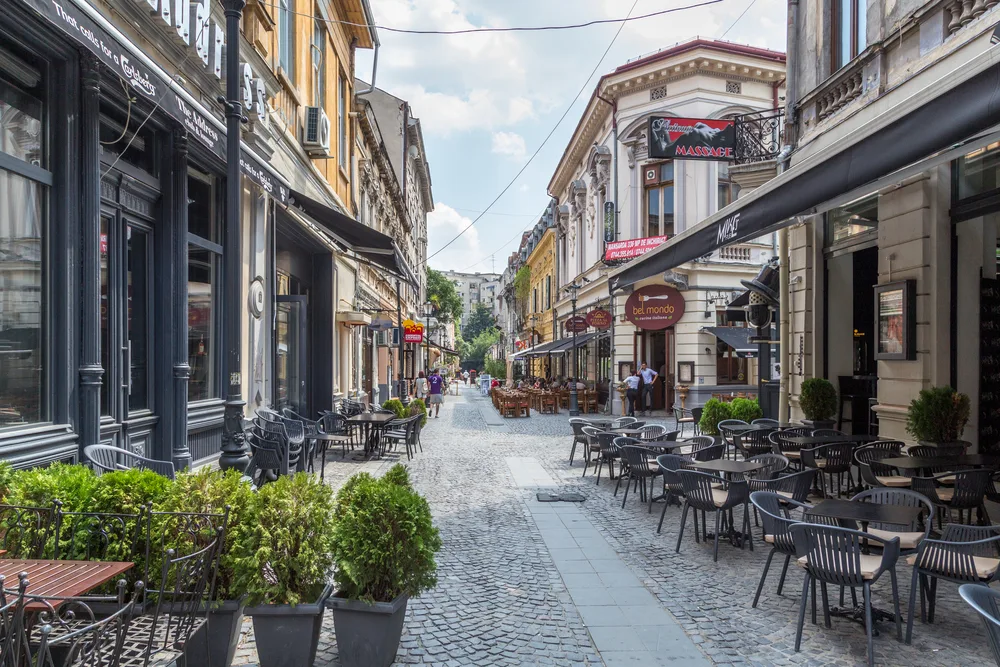
Bucharest, Romania – August 10, 2014: Tourist visit the capital city of Romania on 10th of August 2014 in Bucharest/Bilciu/Shutterstock
The biggest threat to most visitors’ safety in Romania is crime. However, these crimes are mostly mild in nature and will, at worst, leave you with less money than you started with and wounded pride.
Violent crime rates in Romania are very low, even compared to the rest of Europe. Homicide rates are only 1.3%, according to Statista. This represents a sharp decline compared to the 1990s.
While organized crime is still a factor in Romania, tourists are almost certain not to come in contact with this danger. The most common crimes visitors to Romania are likely to encounter are petty thefts, scams, and some muggings.
Pickpocketing is less common in Romania than in some countries that have the perception of being safer, such as Italy. You should still watch out for pickpockets in common tourist destinations such as Bucharest or on crowded public transportation.
Take basic precautions you would take anywhere else, such as keeping valuables in a secure place and staying alert when walking.
The most common crime tourists to Romania experience are scams. One of the most common scams is the taxi scam. Taxi drivers know tourists are unaware of average fare rates, so they will try to overcharge foreigners.
Make sure your taxi driver has the meter running the entire time, research the typical fares ahead of time, or use apps such as Uber.
Other vendors sometimes try to take advantage of tourists as well, so always ask for a receipt. Other common scams happen with overly friendly locals.
Beware people approaching you in the airport or other public spaces where tourists congregate, offering to “help” you; they are usually trying to take advantage of you. In general, if something feels too good to be true, it probably is too good to be true.
Romanian Wilderness
More and more tourists are coming to Romania because it is one of the last truly wild places in Europe. Large regions of the country are covered by mountains.
There are plenty of jaw-dropping hiking trails and pristine nature preserves. Romania is one of the few places on the continent where you can still encounter wild animals, such as bears and bison, outside of zoos.
However, the same reasons that visitors might want to come to Romania are also the biggest threats to tourists’ safety.
Romania’s status as one of Europe’s last wild places is not just a tourism slogan; it is a description of reality. That means you are very likely to encounter a bear or other wild animals when hiking or camping in remote areas.
Infrastructure coverage, such as cell phone coverage in rural areas, is very spotty, so you might not be able to call for help in case of an emergency.
If you want to explore the Romanian wilderness but still stay safe, some common sense will do the trick. Unless you are very experienced with wilderness exploration, stick to the most popular trails.
Keep emergency numbers handy and have a first aid kit with you. Beware of Romanian urban animals as well — the cities have lots of problems with stray dogs. Finally, research the weather conditions.
Many hikers and skiers make the amateur mistake of underestimating Romanian snow and getting stuck in the remote mountains. If you don’t want to be stranded waiting for rescue, reschedule your trip to a remote mountain village if a big storm is expected.
Romanian Nightlife
If you’re going to bars or nightclubs during your time in Romania, you should exercise a bit more caution than when you are going out at home.
Spiking people’s drinks in clubs is sadly fairly common, especially when targeting foreign women. Be careful when coming home late at night — as with any place, walking alone at nighttime is more dangerous than during the day.
When discussing nightlife safety in Romania, it’s impossible to avoid the topic of the Colectiv fire. In 2015, a fire ripped through a nightclub in Bucharest, ultimately killing 64 people and injuring 200.
The fire led to widespread public outcry as people protested the corruption that allowed the faulty building to operate, as well as the failures of the Romanian healthcare system to adequately treat the victims.
The healthcare system is the main reason why Forbes Advisor ranked Romania one of the least safe places in Europe to go on holiday (before you question the main idea of this article, you should know the last-ranked country in the study was the United Kingdom).
Sadly, the main threats to people in Romania come from the institutions that should protect them, institutions most visitors don’t have to interact with.
Traveling in Romania
Besides the wildlife and scams, one of the biggest dangers to tourists in Romania is the traffic. Romania’s public transportation system is underdeveloped, with trains frequently delayed or inexplicably canceled, especially during bad weather.
That means when most people want to get from place to place, they go by car or bus. Romania’s roads are just as undeveloped as the rail network.
Most roads in the country, even ones connecting well-trafficked routes, are still just one-lane roads, creating bottlenecks that last for hours.
Drivers in rural areas can often encounter herds of livestock that wander onto the road or people driving slow horse-driven buggies. The biggest threat to the driver in Romania is other Romanian drivers, infamous in Europe for their impatience.
The poor infrastructure is one reason why Romania is the country with the worst road fatalities in Europe. If you decide to rent a car in Romania, keep this statistic in mind and brush up on your defensive driving skills.
Avoiding Bad Areas
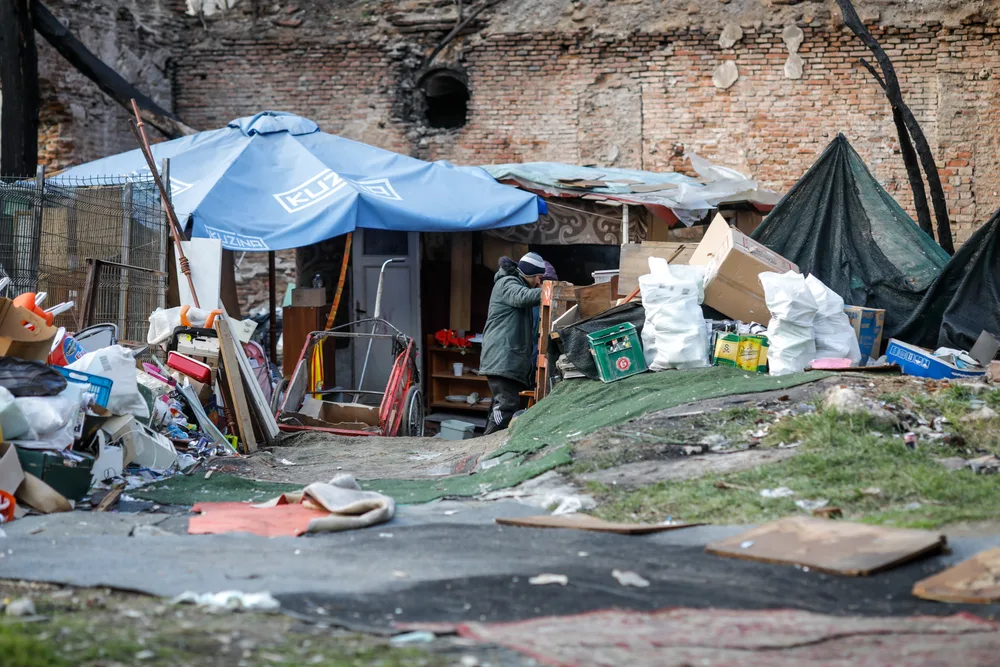
Bucharest, Romania – February 12, 2020: Extremely poor people living in a makeshift shelter in between garbage and a ruined building/Mircea Moira/Shutterstock
Like any other place in the world, Romania has some parts that are safer than others. These neighborhoods are usually impoverished residential blocks towards the edge of major cities, in places where foreign visitors are not likely to go.
Most of the neighborhoods with the worst reputations in Romania are Roma neighborhoods.
Roma people are systemically discriminated against in Romania, with many finding it hard to get an education, find a job, or integrate with the majority population.
They tend to live in impoverished neighborhoods that are more like ghettos because they are physically segregated from other Romanians. As is likely to happen anywhere, poverty breeds desperation which can make these neighborhoods dangerous.
However, many of the horror stories you hear about these ghettos are fueled by racism against Roma people, which is very prevalent even among highly educated Romanians, so keep that in mind.
One of the most notorious of these neighborhoods is Ferentari, a ghetto where much of Bucharest’s Roma population lives.
Most Romanians tell visitors to avoid Ferentari at all costs, but some scholars question if the neighborhood is actually dangerous or if the people there are merely excluded from any kind of social safety net.
Ferentari is also becoming more popular as a disaster or poverty tourism destination. When hearing about Romania’s “bad” neighborhoods, keep in mind that the people who are most in danger are the impoverished residents living in squalid conditions, not visitors.
Still, it’s not a bad idea to stay away from poorer, more dangerous neighborhoods. You encounter those mostly in larger cities such as Bucharest.
Some smaller, post-industrial cities, such as Slatina, also have higher crime rates, but again, that is due to high poverty rates breeding desperation, and people there are less likely to target foreigners.
In general, if you stick to places tourists visit or might want to visit, such as the center of Bucharest or picturesque villages, you won’t encounter bad neighborhoods.
Even supposedly “bad” neighborhoods are fairly safe during the daytime as people don’t bother foreigners. If you want to go exploring in unfamiliar places, do it during the daytime, and don’t flash your valuables.
Frequently Asked Questions
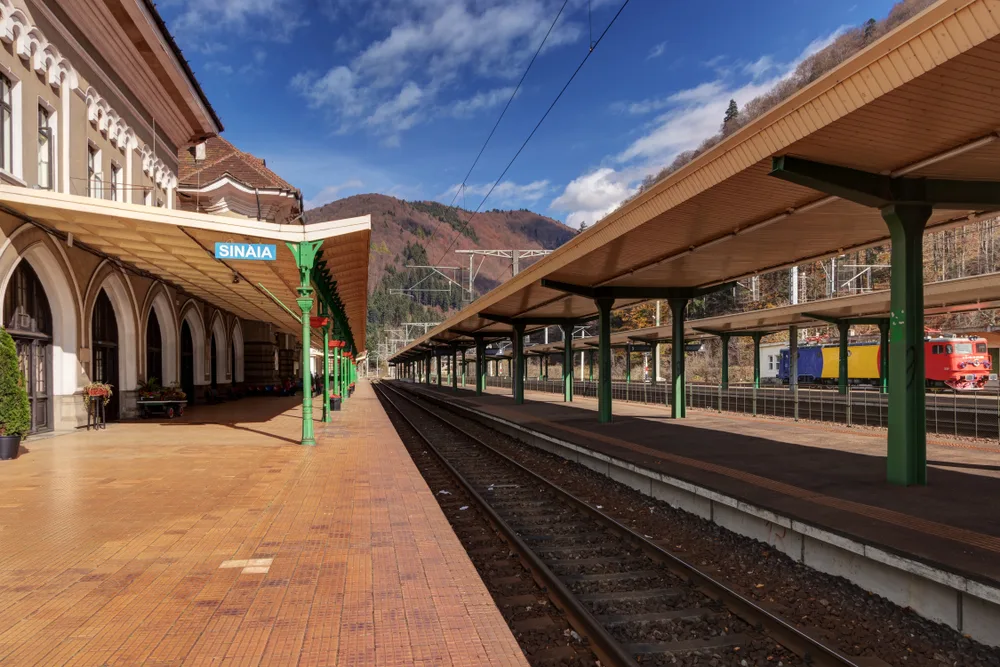
Unknown1861/Shutterstock
Here are some other common questions travelers to Romania ask:
What Should I Avoid in Romania?
When traveling in Romania, avoid making assumptions about the people and history. Romanians are tired of foreigners who are only interested in communism, Dracula, or assume the country is the same as Russia! Stay open-minded, and you will have great conversations.
Is Romania Friendly to Tourists?
Yes, Romania is friendly to tourists. Many Romanians are excited to meet people who are visiting the country. This is a place where small talk is common, so don’t be surprised if someone strikes up a conversation despite the language barrier.
What Is the Safest City in Romania?
The small northern city of Oradea is considered the safest city in Romania. Most other tourist destinations, including the capital Bucharest, are considered very safe.
What to Avoid in Bucharest?
Like any capital city, Bucharest has its poorer neighborhoods and crime. Avoid ghettos such as Ferentari and Rahova. However, scams can happen anywhere, so beware of people approaching you in the street asking you for money.
Are Taxis Safe in Bucharest?
In most Romanian cities, taxis are very safe, but those in Bucharest are known for being scammers. Order from apps such as Uber or research trusted companies. Taxis from the airport now have to be verified as the government has cracked down on scammers, so you can rely on those.
So, Is Romania Safe to Visit?
Despite the outdated perceptions, Romania is a safe country for foreigners. Petty crime such as pickpocketing does happen in crowded areas, but you’d have a hard time finding a tourist destination where that doesn’t happen.
Just be careful when driving on the poorly maintained roads or going into the wilderness. So, with so much to see and do, what are you waiting for — book your trip today and experience all that Romania has to offer!



